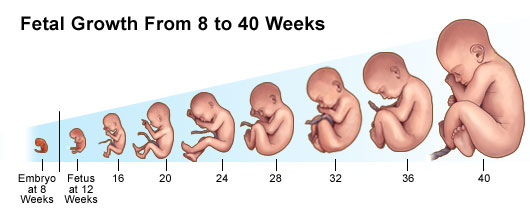Abortion as a Medical Procedure
Abortion is more than just a political debate: it is a medical procedure. What the process actually entails at different stages of pregnancy is a common misconception present in conversations about the subject.
Abortion is typically split into two categories: medical (sometimes In-Clinic) and surgical. The difference lies in what stage of pregnancy a woman is in; medical abortions are used when a woman is in her first trimester, and surgical abortions are used during the late first trimester and later.
What does a medical abortion entail?
A medical abortion, sometimes referred to as an "In-Clinic" abortion, is used before the eleventh week of pregnancy; it can be started either in a medical office or at a patient's home. The patient would take a medicine that causes the uterine lining to shed, creating an effect similar to a period.
The following video by Planned Parenthood describes the process in more detail:
(Video Provided by Planned Parenthood)
What does a surgical abortion entail?
A surgical abortion is more complex than a medical one and involves the patient having either localized anesthesia or being put fully under anesthesia.
There are two different types of surgical abortion: Aspiration Abortion (Suction D&C) and Dilation and Evacuation Abortion (D&E).
Aspiration Abortion: 5-12 weeks pregnant
Aspiration abortion is performed during the first trimester of pregnancy. A suction catheter is inserted into the patient's uterus and used to remove the fetus. The uterine lining is then scraped of any remaining parts of the pregnancy.
Dilation and Evacuation: 15-24 weeks pregnant
This method of abortion is the type that has traditionally been demonized in the media, as though procedurally, it is similar to an aspiration abortion, it takes place at a time in pregnancy when the fetus has grown to such an extent that many people view this procedure as "killing a baby."
(Image of the Development of a Fetus, from Stanford Children's Health)
In a Dilation and Evacuation, the cervix is dilated, and a suction catheter is used to remove amniotic fluid from the uterus. Tools, such as forceps and curettes, are used to remove the fetus and scrape the uterine lining of any remaining tissue.
